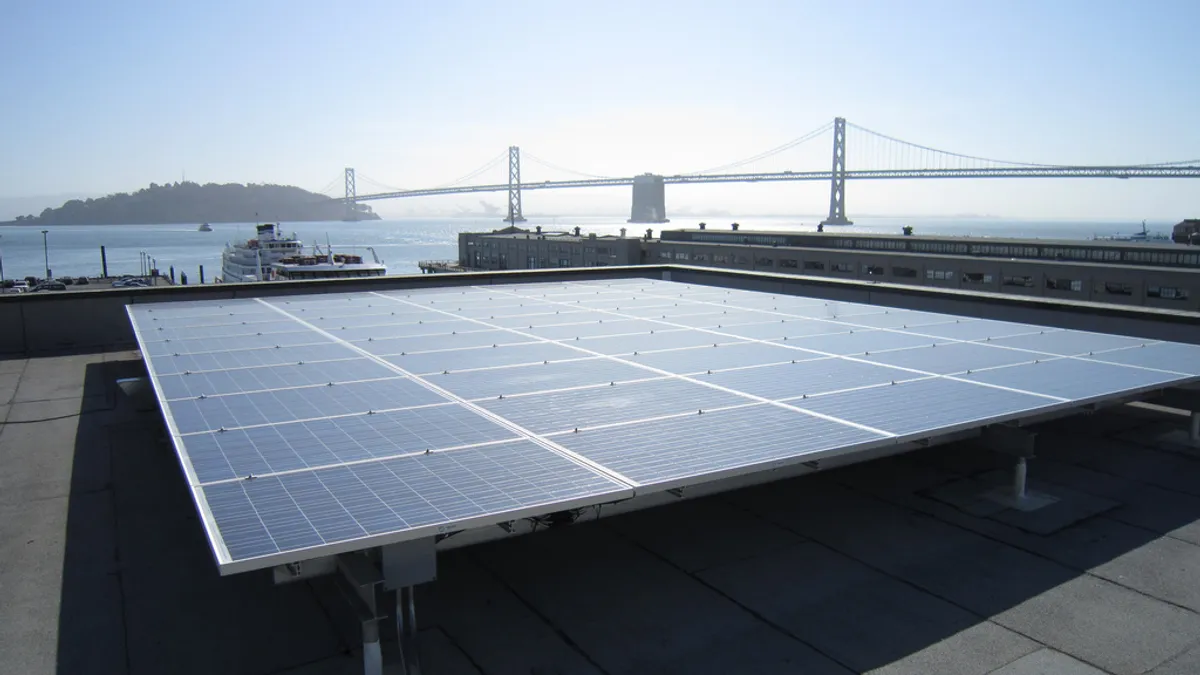Utilities keenly watching the growth of distributed generation generally fall into two camps, according to a new report by Black & Veatch — those who embrace the technology as an opportunity and those who see it as a threat to the traditional business model.
Utilities who view distributed resources as an opportunity and adopt a proactive approach can leverage it to increase customer engagement, the consulting firm found.
"By taking steps to embrace DG, they can avoid being blind-sided by its growth and successfully prepare for the DG-enabled grid of the future," the firm said.
Four unnamed utilities are currently working with Black & Veatch to implement some of its six-step plan to turn distributed generation into a business opportunity.
The opportunity for utilities
Utilities "can participate in development, financing, construction, and maintenance of DG facilities; and they can build the operational capabilities to accommodate DG on their grid before negative impacts are felt," according to the report.
But there is a cost to accessing this opportunity. For one, distributed generation makes operation of a utility's system more complex and will require investment in hardware, software and in control rooms, Ryan Pletka, associate vice president in Black & Veatch’s energy business, told Utility Dive in an interview.
Despite the investment required to allow greater penetrations of distributed generation, "this is where we see the sweet spot of enabling utilities to grow," said Pletka, who also serves as director of the western region for the company’s renewable energy group.
And there is much room for the growth of distributed generation, especially rooftop solar. Cumulative installed solar PV in the U.S. has grown from about 1,200 MW at the end of 2009 to about 12,000 MW just four years later. Estimates indicate that number could reach 40,000 MW by the end of 2017 and more than half of that could be installed on the distribution system.
Dan Wilson, a renewable energy consultant with Black & Veatch’s global energy business, worked with the Los Angeles Department of Water and Power in 2011 and 2012 to help the nation's largest utility make their solar incentives program operate more efficiently.
"There was a huge increase in interest in solar," Wilson said of when the utility uncapped the number of customers who could enroll in the program. Applications increased by 400% to 500%, he told Utility Dive. "They were overwhelmed because their processing was all on paper."
Wilson helped the utility move to an online platform, an example of how technology can ease the process.
"We helped them get the whole process online," he said. "They had a fairly complex process and we were able to help them streamline it." After implementing the online process, the utility was able to double payments to customers from about $30 million to $60 million.
The next step for utilities, Wilson said, will be software developed to manage distributed generation interconnections. Today, "it's still paper-based and time-intensive," he said.
The six-step plan for utilities to take control of distributed generation
Utilities looking to harness the full potential of distributed generation need to engage in a holistic approach to the strategic shift. This begins with assessing the technical and economic potential of distributed resources in the utility's service territory, according to Black & Veatch's report.
There are six steps that allow utilities "to take control of DG and reverse the so-called 'utility death spiral' of higher rates, which ultimately result in greater DG adoption," the report said.
After the technical and economic assessment, utilities must analyze customer load profiles, identify locations where distributed generation provides the most benefit, and restructure rates to eliminate cross-subsidy and fairly compensate distributed generation customers. The final steps include implementing location-based incentives and being forward looking in developing a transmission plan to accommodate distributed generation growth.
Black & Veatch has been helping four utilities implement some of these steps, but said "no utility has yet put this entire concept into practice."
The consulting firm noted that some utilities "will argue that net energy metering tariffs — which most DG customers use — result in a cross-subsidy, because DG customers do not pay their fair share of fixed utility costs like transmission and distribution infrastructure."
In low-penetration solar regions, "some of our utility customers have been passive, because this part of their customer base is so small," Pletka told Utility Dive. "It's an insignificant level of customers for businesses to worry about how it effects their bottom line."
But utilities understand that "when customers can adopt DG and receive fair compensation while avoiding negative impacts on non-DG customers, everyone wins," Black & Veatch said. "However, given regulatory limits on investments outside core services, utilities must be careful to gain regulatory support to recover DG investments in rates."
In Arizona, a high-penetration solar state and the locus of last year's contentious net metering debate, utilities Arizona Public Service and Tucson Electric Power have recently come out with two of the first proposals to rate base utility-owned solar systems on customer rooftops. Whether these proposals will pass muster with state regulators still remains to be seen.






















